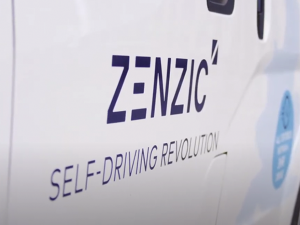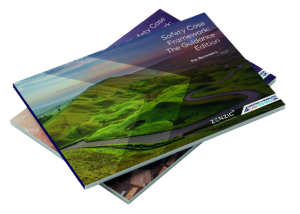Headquartered in Oxford, UK, StreetDrone are a provider of connected and autonomous vehicle platforms for the first- and last-mile logistics markets and were the first company in the world to offer subscription-based autonomous driving software, and the first in Europe to run an “open-source” autonomous vehicle on the road.
Currently StreetDrone is accelerating the pace at which autonomous and connected, all-electric vehicle technologies and innovations are transforming the supply chain. By initially deploying their technologies in retail and industrial yards, they are enabling the creation of zero delay, zero accident and zero emission operations within complex business environments.

What was the trial and which testbeds did you work with?
The purpose of the ENCODE demo was to demonstrate the potential of teleoperation along with the safety and security improvements made within the project. For this purpose, we used two vehicles that have been previously retrofitted with our Drive-by-wire system and developed a “multi-driver” system which allows seamless switching of vehicle operation between manual, autonomous and remote operation.
For the purposes of the demo the two “multi-driver” vehicles were operating simultaneously across two different cities (London and Oxford) both routes were on public roads with the London route based within the Smart Mobility Living Lab: London (SMLL) testbed. The remote operator demonstrated the ability to switch from one vehicle to another and teleoperate them remotely to assist the ADS when identifying that the environment was outside its ODD.
SMLL’s testbed at Woolwich was used during the pre-demo trials, as well as Bicester Heritage.
What were past challenges faced and prompted the need for the guidance documentation?
The breadth of best practice standards in the UK thanks to the BSI CAV standards programme and other initiatives is incredibly valuable to the CAV industry as a whole, however for CAV providers in early/growth phases it can be difficult to tie these standards together and cut through to the necessary level of detail. The safety case framework guidance provides a concise overview of relevant items from other best practice documents, alongside key examples and templates, at StreetDrone we have found this guidance especially useful when deciding on how to approach our safety case for trials and in particular proportionality of our safety case across different scales of trials.

How did the guidance help?
The Encode project was conducted over a relatively short 6 months period and relied on building upon previous test and trial knowledge, the safety case guidance helped in particular with how to scale up and adjust our safety case from previously conducted trials. It also proved beneficial as the trial involved working with one of the CAM testbeds (SMLL) alongside a local authority (OCC) who have a good deal of involvement in the CAV standard programme, using a common language and matching their expectations ensured minimal wasted time aligning on approach.
What would you have done without this piece of guidance? Did it save you time?
Yes saved us time and ensured safety case documentation included the relevant level of detail.
Were the templates used? And how useful were they?
Within the Encode project we did not use the templates featured in the guidance document directly as we already had existing documentation in use from trials prior to the issuing of this guidance document, however they did prove to be useful to cross reference further ensuring our internally created docs captured the relevant information.
How can the guidance be improved?
To remain useful to CAV providers it is essential the guidance is kept up to date with current developments and focus of trials within the industry. The purpose of the Encode trials was to explore multi-driver vehicles, with teleoperation or remote driving as a key element. Encode showed how it’s possible to use the guidance documents and other CAV standards to ensure acceptable levels of safety while trialing the next level of technology, in order to continue along this approach it is key the guidance documents keep up with where the industry is going. (94 words)
To find out more about the Safety Case Framework, please visit: Safety Case Framework – Zenzic


